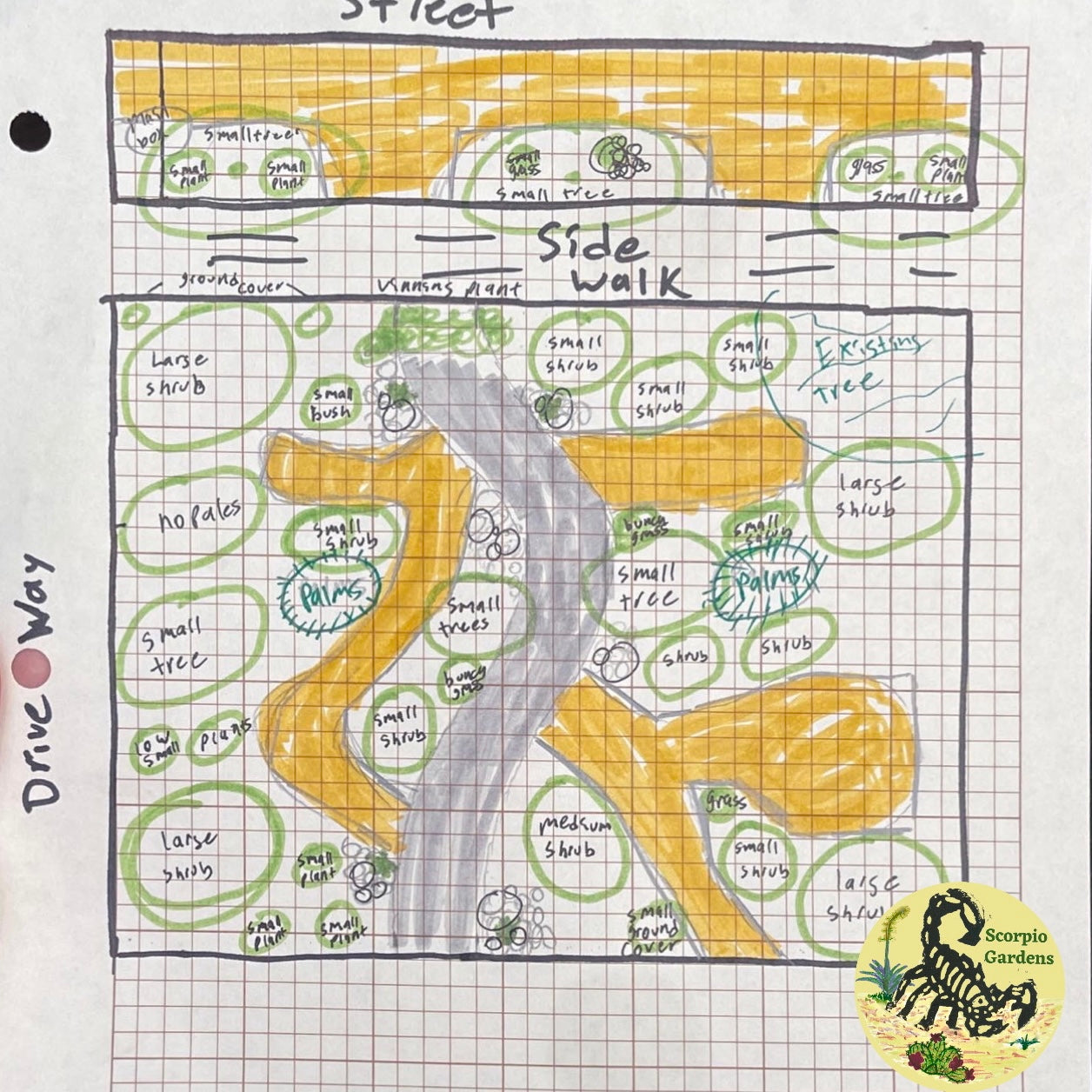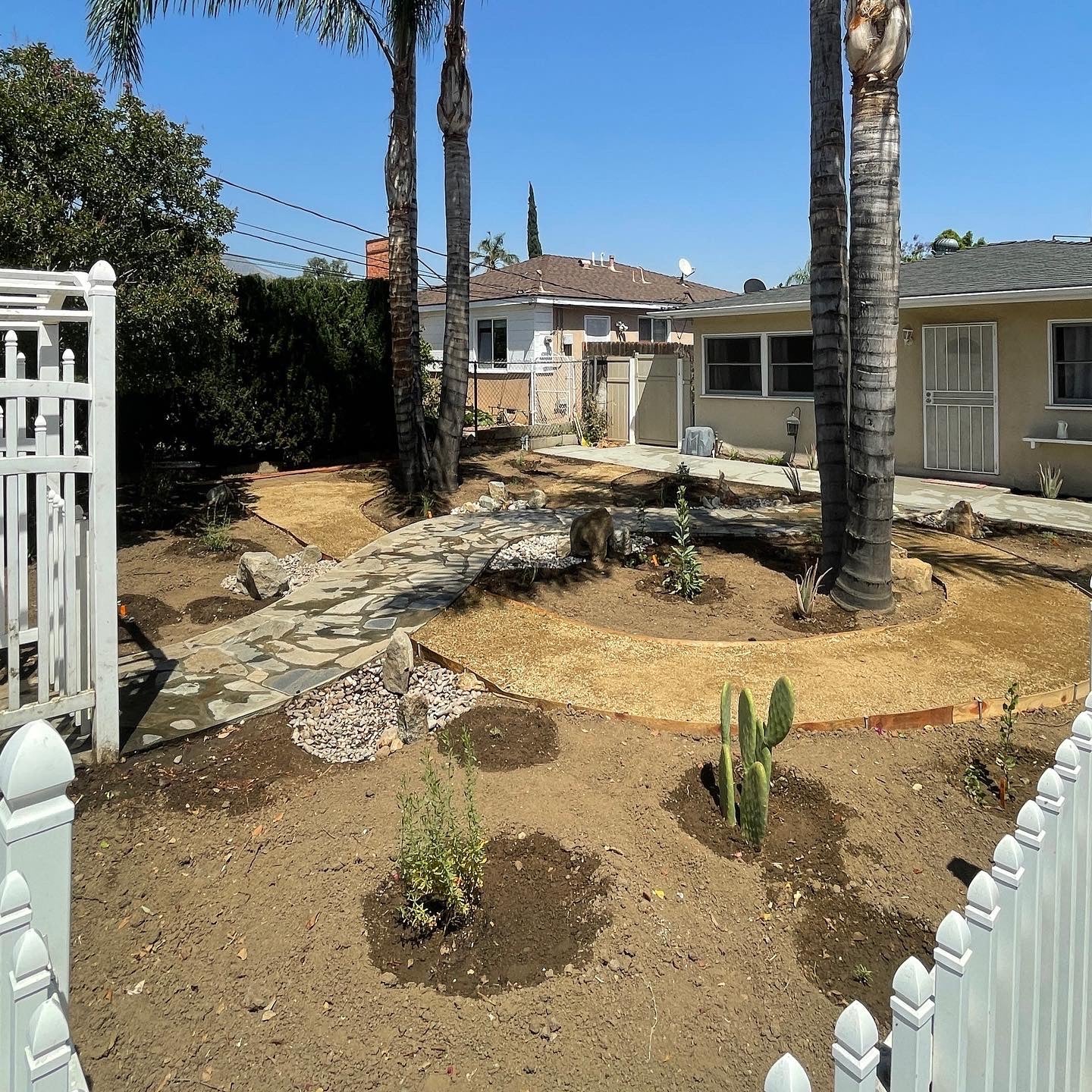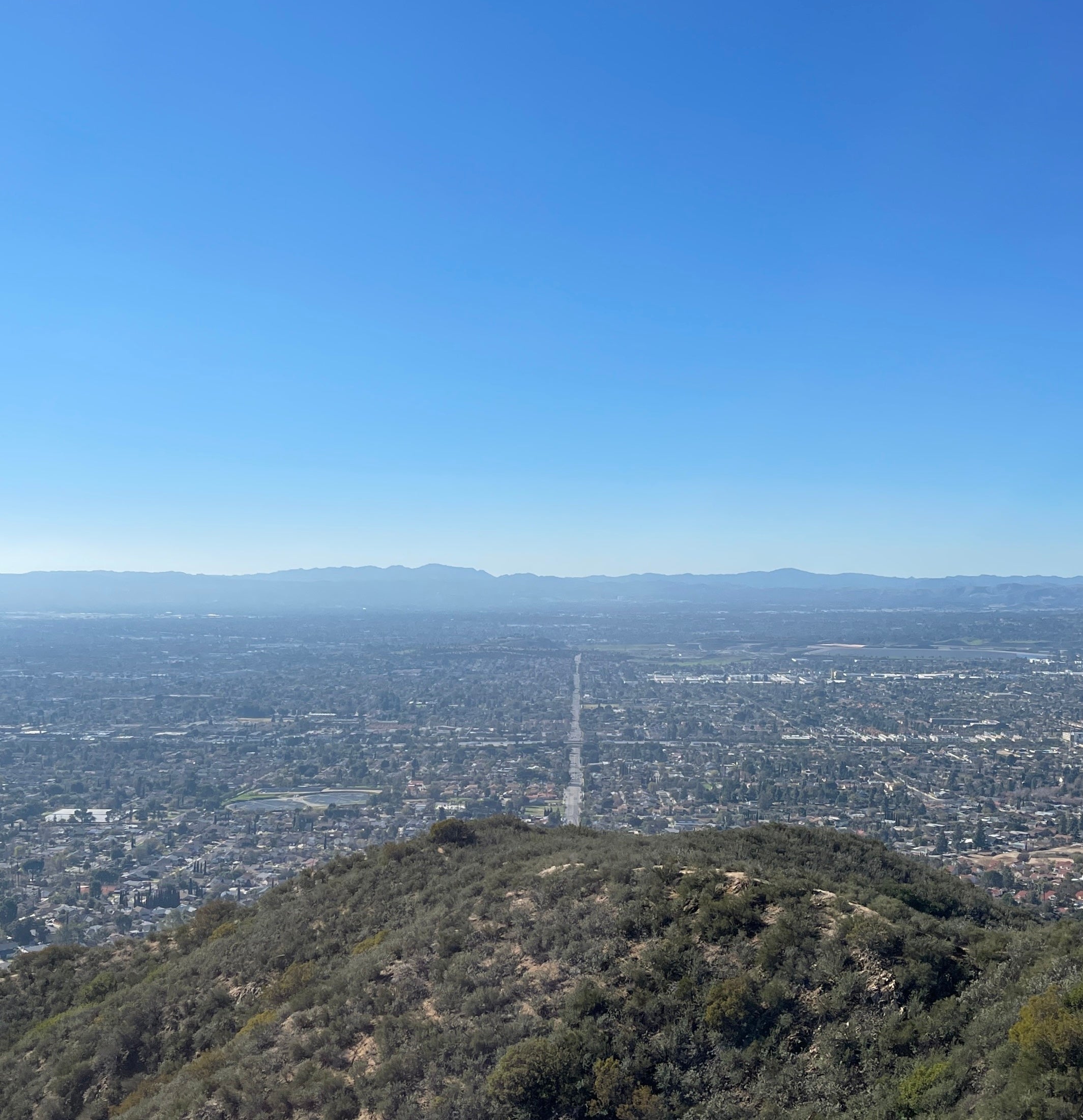Our Project Process
Curious about working with Scorpio Gardens on your next plant, garden, or landscaping project? Our Project Process page walks you through what to expect when collaborating with us — from initial inquiry to design, sourcing, installation, and care. We specialize in native, edible, and climate-resilient landscapes rooted in environmental justice and cultural connection. Learn how we co-create plant spaces that are intentional, functional, and uniquely yours.

Scorpio Gardens Process
At Scorpio Gardens, our project process is structured to achieve specific goals that align with our commitment to environmental and social justice. Each step is carefully designed to ensure that the finished product not only enhances your landscape but also promotes ecological well-being and community well-being. Here's a detailed overview of our goal-oriented process, note that depending on the service booked with us the project process will vary in depth and scope but will follow this framework:

Step One
Goal Planning and Setting
Before we begin any project, we work closely with you to define clear objectives. Whether it's reducing water consumption, increasing biodiversity, or enhancing community engagement, we establish measurable goals that guide our entire process.
- Example: If your goal is water conservation, we aim to reduce irrigation needs through the selection of drought-tolerant native plants and efficient irrigation systems.
Environmental and Social Justice Assessment: We conduct an assessment to evaluate the potential environmental and social impacts of the project. This step ensures that our actions contribute positively to the local ecosystem and community.
- Goal Fulfillment: We aim to minimize any negative environmental impacts and maximize benefits, such as creating habitat for local wildlife or fostering community involvement.

Step Two
Site Analysis
Our process starts with a comprehensive site analysis to understand the existing conditions. The goal here is to identify environmental factors, social considerations, and potential challenges.
- Outcome: A detailed site analysis report that outlines the landscape's current state, including soil quality, sunlight exposure, and ecological health.
Storm-water Flow and Capture Analysis: As part of the Site Analysis, we will track storm water flows to understand how water moves in the landscape. Where relevant, we implement features like permeable paths and rain gardens to manage storm-water responsibly.
- Outcome: A storm-water management system that supports water conservation and reduces runoff.
Fire Risk Analysis: In fire-prone areas, we conduct risk assessments and implement landscaping strategies to mitigate fire hazards.
- Goal Achievement: Reducing the risk of wildfire damage and promoting community safety.

Step Three
Planning & Design
Based on the established goals, we create a customized plan that outlines the design elements, plant selections, and hardscape features. This phase serves as a blueprint for achieving the desired outcomes.
- Finished Product: A detailed landscape design plan and map that includes plant placement, materials, and features to meet environmental and social justice objectives.
Material Selection: We prioritize the use of eco-conscious and locally sourced materials to reduce environmental impact during construction. The goal is to minimize resource consumption and support local economies.
- Goal Achievement: The use of sustainable materials, such as reclaimed wood or recycled paving stones, aligns with our eco-friendly objectives.

Step Four
Instillation Plan
We create a detailed installation plan that outlines the sequence of activities, ensuring that each element is executed efficiently and to the highest standards.
- Outcome: A clear installation plan that facilitates the achievement of project goals within the specified timeline.

Step Five
Maintenance Planning
Our team provides you with a custom maintenance plan that includes responsible practices such as organic pest control and efficient watering schedules.
- Goal Maintenance: Ensuring that the landscape continues to fulfill its environmental and social justice goals in the long term.
Environmental and Social Justice Implementation: Throughout the installation process, we actively incorporate principles of environmental and social justice. This includes planting native species to support local ecosystems or engaging the community in project-related activities.
- Goal Progress Monitoring: We continually assess our progress toward environmental and social justice goals, making adjustments as needed.
Expected Growth and Monitoring: We educate you about the expected growth patterns of selected plants and set up monitoring to ensure the landscape evolves in alignment with established goals.
- Goal Tracking: Continuously evaluating the landscape's progress toward achieving environmental and social justice objectives.
Our commitment to principles of environmental and social justice drives every aspect of our project process.
By setting clear goals, implementing responsible practices, and monitoring progress, we ensure that your landscape contributes positively to the planet and the community.

Service Area
At Scorpio Gardens, we're passionate about transforming landscapes and fostering environmental and social justice throughout our communities. Our services are available in select areas across the San Fernando Valley, Los Angeles, and Ventura County regions. We are proud to serve the following areas:
- San Fernando Valley
- Los Angeles County
- Ventura County
If you're located within or near these regions and are interested in our sustainable landscaping services, we invite you to get in touch with us for a consultation. We're committed to creating lush, resilient, and socially conscious outdoor spaces that make a positive impact on both the environment and the communities we serve.
For clients outside of our primary service areas, we also offer remote consultations. Don't hesitate to contact us to discuss your specific needs and location, and we'll do our best to accommodate your project. Together, we can cultivate justice, one garden at a time.
